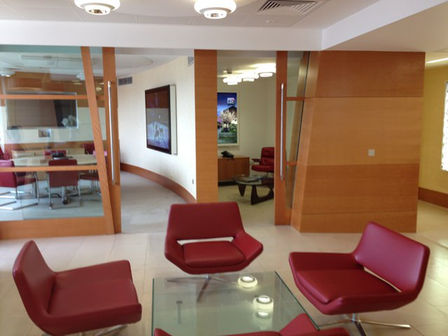
Millbank Tower, London

Sustainable Acoustics was been instructed to investigate the acoustic sound insulation between Floors 29 and 30 of Millbank Tower, as well as the capacity of the music system on Floor 29 to be able to reproduce a sound field that will not be intrusive to the commercial operation on the 30th floor.
Acoustic tests were carried out, and it was established that the previously set music levels on the system used by Floor 29 were capable of causing the music to be audible within the boardroom and all three other offices tested (which included the CEO’s office) on Floor 30. The contribution of the levels exceeded the target criteria, which was based on a combined test which included both subjective and objective elements aimed at meeting the expectation of being close to inaudibility.
Targeted refinement to each frequency of the music enabled a condition to be achieved whereby the music was not audible against the ambient noise from the services and did not raise the measured noise levels in each frequency sufficiently to suggest that the music noise was affecting the overall noise level on Floor 29. This test was repeated in each of the other rooms on the floor, with the same result in all spaces except the small meeting room, where background levels were considerably lower. In this space, the music was barely audible when staying quiet; considering the one-to-one use of this space, it was considered to meet the criteria on balance.
The set-up was referred to as the ‘fair level threshold’, which met the criteria considered necessary to meet the expectations of the occupants of Floor 30. The acoustic limiter was adjusted so that, in the expert opinion of Mr Rogers, it would robustly control the music noise levels against the defined maximum music levels (LAeq 87dB(A)), which was considered to be commercially viable for those on Floor 29.
In the expert opinion of Mr Rogers, sufficient and robust protection is now in place to enable the operation of the dance floor without disruption to those on Floor 30.







